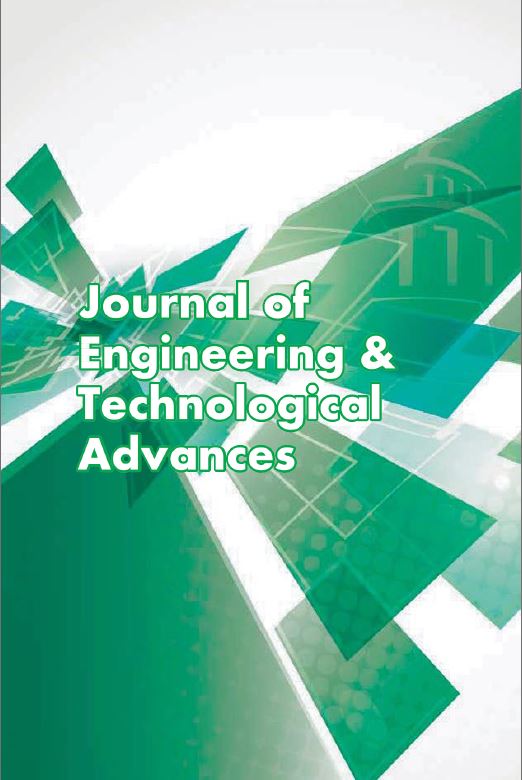Abstract
The heat equation is widely used in engineering applications to predict temperature distribution in materials subjected to heating or cooling, such as in high-temperature furnaces and pipeline-based heat networks. This study applies the alternating direction implicit (ADI) method to solve a two-dimensional heat conduction problem and evaluates its accuracy through grid convergence and error analysis. Results indicate that finer grid resolutions improve numerical accuracy, with absolute errors decreasing from 15.523 (for a grid size of 110) to 0.493 (for a grid size of 190) at the centre of the plate. Computational efficiency analysis reveals a trade-off, as execution times increase from 0.089907s to 0.432780s for the same grid refinements. These findings confirm the ADI method’s reliability for thermal simulations, offering a balanced approach between precision and computational cost. The study concludes that the ADI method is a robust and efficient tool for modelling heat conduction in engineering applications.
References
Ajeel, O. A., & Gaftan, A. M. (2023). Using Crank-Nicolson numerical method to solve heat-diffusion problem. Tikrit Journal of Pure Science, 28(3), 101-104.
Beckermann, B., & Townsend, A. (2017). On the singular values of matrices with displacement structure. SIAM Journal on Matrix Analysis and Applications, 38(4), 1227-1248.
Carslaw, H. S., & Jaeger, J. C. (1959). Conduction of heat in solids (2nd ed.). Oxford University Press.
Cheng, A. H. D., & Cheng, D. T. (2005). Heritage and early history of the boundary element method. Engineering analysis with boundary elements, 29(3), 268-302.
Crank, J. (1984). Free and moving boundary problems. Clarendon Press.
Idoko, I. P., Ezeamii, G. C., Idogho, C., Peter, E., Obot, U. S., & Iguoba, V. A. (2024). Mathematical modeling and simulations using software like MATLAB, COMSOL and Python. Magna Scientia Advanced Research and Reviews, 12(2), 062-095.
Incropera, F. P., DeWitt, D. P., Bergman, T. L., & Lavine, A. S. (2007). Fundamentals of heat and mass transfer (6th ed.). Wiley.
Ivrii, V. (2022). Partial differential equations. https://www.math.toronto.edu/ivrii/PDE-textbook/PDE-textbook.pdf
Kaw, A., & Garapati, S. H. (2011). Parabolic differential equations. https://mathforcollege.com/nm/mws/gen/10pde/mws_gen_pde_txt_parabolic.pdf
Lu, A., & Wachspress, E. L. (1991). Solution of Lyapunov equations by alternating direction implicit iteration. Computers & Mathematics with Applications, 21(9), 43-58.
Mathews, J. H., & Fink, K. D. (2004). Numerical methods using MATLAB. Pearson.
Norzilah, A. H., & Nursalasawati, R. (2019). Alternating direction implicit (ADI) method for solving two dimensional (2-D) transient heat equation. ASM Science Journal, Special for SKSM, 26(6), 28-33.
Özi?ik, M. N. (2017). Heat conduction. John Wiley & Sons.
Patankar, S. V. (1980). Numerical heat transfer and fluid flow. Taylor & Francis.
Peaceman, D. W., & Rachford, Jr, H. H. (1955). The numerical solution of parabolic and elliptic differential equations. Journal of the Society for industrial and Applied Mathematics, 3(1), 28-41.
Reddy, J. N. (2005). An introduction to the finite element method (3rd ed.). McGraw-Hill.
Roy, A. K., & Kumar, K. (2021). 2D heat conduction on a flat plate with Ti6Al4V alloy under steady state conduction: A numerical analysis. Materials Today: Proceedings, 46, 896-902.
Saqib, M., Hasnain, S., & Mashat, D. S. (2017). Computational solutions of two dimensional convection diffusion equation using crank-nicolson and time efficient ADI. American Journal of Computational Mathematics, 7(03), 208–227.
Smith, G. D. (1985). Numerical solution of partial differential equations: Finite difference methods. Clarendon Press.
Strauss, W. A. (2008). Partial differential equations: An introduction. John Wiley & Sons.
Strikwerda, J. C. (2004). Finite difference schemes and partial differential equations (2nd ed.). Society for Industrial and Applied Mathematics.
Wachspress, E. L. (2008). Trail to a Lyapunov equation solver. Computers & Mathematics with Applications, 55(8), 1653-1659.
Zienkiewicz, O. C., Taylor, R. L., & Zhu, J. Z. (2005). The finite element method: Its basis and fundamentals (6th ed.). Butterworth-Heinemann.

This work is licensed under a Creative Commons Attribution-NonCommercial-NoDerivatives 4.0 International License.
Copyright (c) 2024 Array

